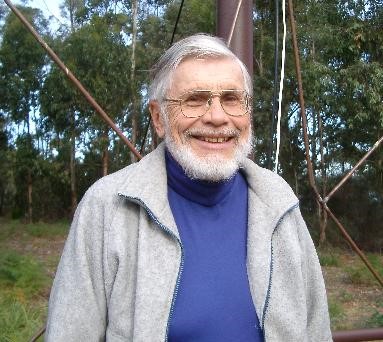Daily Image
06-11-2015In memoriam Bill Erickson 1930-2015
| Submitter: | Johan en Jornarose Hamaker |
| Description: | Earlier this fall, Bill Erickson died at his home in Tasmania. Astron has known him for more than half a century since he worked in Leiden in 1963-1964, heading the exploratory phase in the development of a Benelux Cross Antenna whose concept was later abandoned in favour of the WSRT. He visited Dwingeloo and Leiden many times since and spent a three-month sabbatical in Dwingeloo in 1983. Bill was a quiet, soft-spoken man whose influence was nonetheless considerable, owing to creative ideas and his enthusiasm to participate hands-on in the labour of putting them to practice. He was also an outdoors man who greatly enjoyed the remote natural environments where these endeavours took him. All of this made him a very effective teacher for many generations of students at the University of Maryland. He was the architect of the Clark Lake array in California where the first-ever synthesis observations at the low end (6-60 MHz) of the radio window were made. The instrument did not make it through its early commissioning, though: In the fierce competition with other developments, funding was prematurelly cut off. Bill recovered from this disappointment by inspiring and actively participating in the development of the VLA 74 MHz system, the first instrument to undertake systematic synthesis observations below 150 MHz. Experience with this system was gratefully used in the eventual design of LOFAR. In the 1980s he moved from Maryland to Australia, his wife Hilary's home country, settling on a small island off Tasmania. From there they commuted annually for a few months to a mobile home on the property of one of his former students (Bob Hanish and Susan Neff, who have also been postdocs at Dwingeloo: it's a small world). There they worked at Maryland and the Goddard Space Flight Center, where Hilary was employed as a solar-particle physicist. They regularly traveled to Europe where Hilary collaborated with a group at Kiel, Germany, visiting us at Dwingeloo on the way. We had the pleasure of hosting them on most of these occasions. In 1999 we traveled together to Northern France to (90 percent unsuccessfully) watch the Solar eclipse. In the early 2000s he took part in the conceptual development of an international synthesis array for frequencies down to tens of MHz. The international cooperation broke down, but telescopes were built independently in New Mexico and South-West Australia, while Astron obtained funding for the bold step of constructing LOFAR in the Netherlands. Bill finally retired from the international scene, but kept observing the Sun from his backyard with a home-built 26 MHz array. It was a privilege to have known him. |
| Copyright: | NN |
| Tweet |  |
